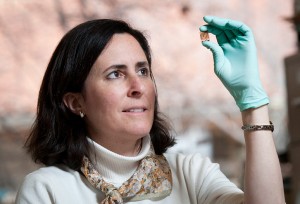 BROOKLYN, NY – Brooklyn Bridge Park and Beautiful Earth Group (BE), a Brooklyn-based renewable energy company, announced today the arrival of a state-of-the-art solar-powered electric vehicle charging station to Brooklyn Bridge Park – a world-class 85-acre sustainable waterfront park with iconic views of the New York Harbor and Manhattan skyline.
Designed and built by BE, the station is the first solar-powered charging station in New York City and one of only a few in the world. Brooklyn Bridge Park will use the donated station to charge its electric service vehicles (EVs) using only the power of the sun. This project greatly enhances the Park’s already impressive sustainability efforts, which include the reuse of materials from demolished buildings, use of native plant species, reintroduction of marine habitats and management of rainwater and runoff.
BROOKLYN, NY – Brooklyn Bridge Park and Beautiful Earth Group (BE), a Brooklyn-based renewable energy company, announced today the arrival of a state-of-the-art solar-powered electric vehicle charging station to Brooklyn Bridge Park – a world-class 85-acre sustainable waterfront park with iconic views of the New York Harbor and Manhattan skyline.
Designed and built by BE, the station is the first solar-powered charging station in New York City and one of only a few in the world. Brooklyn Bridge Park will use the donated station to charge its electric service vehicles (EVs) using only the power of the sun. This project greatly enhances the Park’s already impressive sustainability efforts, which include the reuse of materials from demolished buildings, use of native plant species, reintroduction of marine habitats and management of rainwater and runoff.
Using solar power to operate its EVs will yield significant cost savings for Brooklyn Bridge Park – more than $200,000 in gasoline costs, and tens of thousands of dollars in electricity costs, over the 25-year lifetime of the project. More than 530 tons of CO2 would have been emitted during this period had the Park chosen to use traditional service vehicles.
“On behalf of Brooklyn Bridge Park, I thank Beautiful Earth for the gift of this pioneering solar-powered charging station for the park’s fleet of electric vehicles,” said President of Brooklyn Bridge Park Regina Myer. “Brooklyn Bridge Park is New York’s premiere sustainably-built and operated public park and the charging station furthers our mission to honor the environment and conserve resources. We are thrilled to partner with one of Brooklyn’s most innovative technology companies and to help demonstrate the future of renewable energy.”







